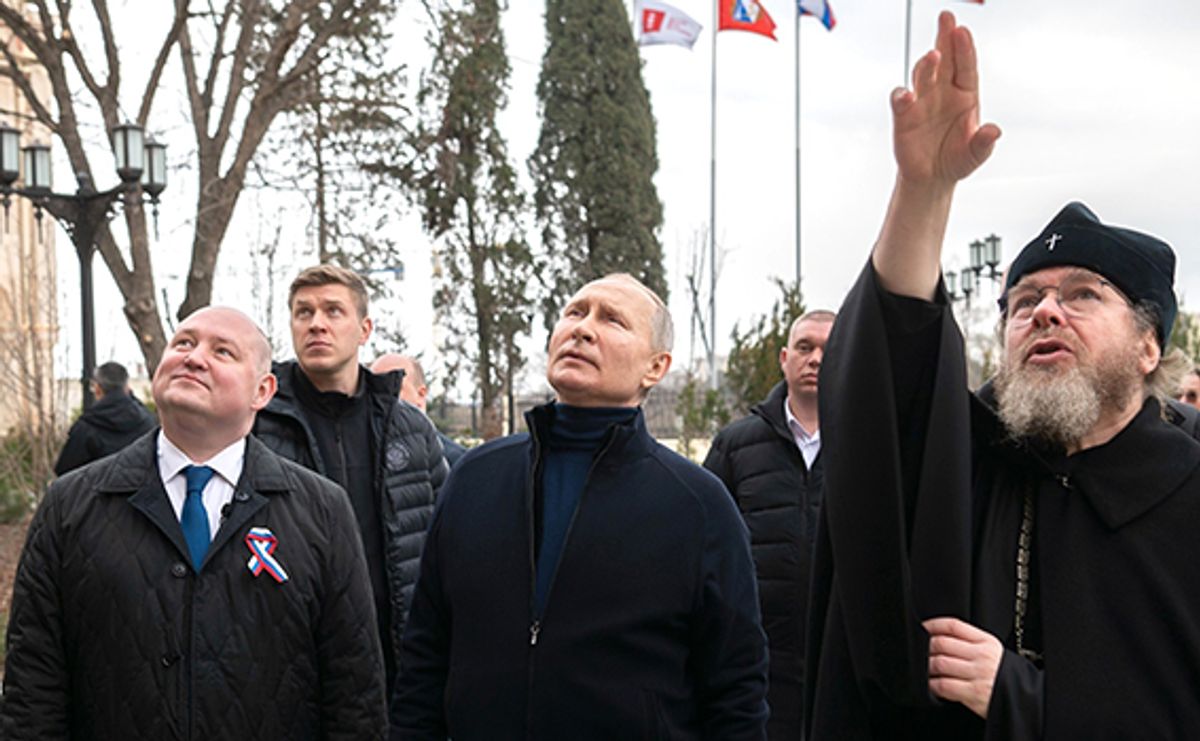The Russian President Vladimir Putin has marked the ninth anniversary of the illegal annexation of Crimea from Ukraine by visiting Tauric Chersonese, a Unesco World Heritage Site on the Black Sea peninsula that his government is transforming into a cultural and ideological platform for Russian expansion.
His visit on 18 March came the day after the International Criminal Court issued an arrest warrant for him on war crimes charges for the deportation of Ukrainian children from illegally annexed territories of Ukraine.
“History park”
Putin was given a tour of a new children’s arts school on the site by Metropolitan Tikhon Shevkunov, a Russian monk known for creating ideologically charged cultural and historical projects in support of the regime. Shevkunov’s “Russia—My History” is a multimedia “history park” that has expanded from Moscow’s VDNH Stalin-era fairground to locations across Russia and displaced valuable local collections.
Tauric Chersonese was included on the World Heritage List in 2013. Rather than citing it as a Unesco site, Russia now refers to it as the “Tauric Chersonese historical and archaeological park”. Unesco, Ukraine, and local activists have warned that Russian activities at the ancient city site are endangering it. Tauric Chersonese is also closely associated with St Petersburg’s State Hermitage Museum, which has conducted digs there since the 19th century.
Shevkunov is overseeing a reconstruction of the complex by builders from the Ministry of Defence, according to Sevastopol's governor Mikhail Razvozhayev, who spoke to the official Tass news agency on the day of Putin’s visit. Sevastopol is the headquarters of Russia’s Black Sea Fleet.
According to the news agency, the plans for the park include “a museum of antiquity and Byzantium, an international archaeological centre, an amphitheatre, a reconstructed quarter of the ancient city, including museum and archaeological exhibitions, souvenir shops, cafes, a museum of Crimea, an archaeological landscape park, a tourist centre, a museum of Christianity, a humanitarian centre in Korsun, a car park for 1,380 cars and other facilities”.
The Kremlin’s website states it will also feature a museum of “Novorossiya”, a term from the time of Catherine the Great now applied by Russian authorities to territories illegally annexed from Ukraine.
“Sacral importance for Russia”
Putin has spoken of Crimea and Tauric Chersonese as central to Russian statehood. In his 2014 state of the nation address, he declared: “All of this allows us to say that Crimea, the ancient Korsun or Chersonesus, and Sevastopol have invaluable civilisational and even sacral importance for Russia, like the Temple Mount in Jerusalem for the followers of Islam and Judaism.”
Following his visit to Crimea, Putin travelled to Mariupol, a city in eastern Ukraine nearly obliterated by Russian troops in the early days of the 2022 invasion. Putin and the Russian state media are now promoting the city’s reconstruction.
St Petersburg, which became Mariupol’s sister city last year, is overseeing some of the work. The Russian city's deputy governor Boris Piotrovsky, the son of the Hermitage museum's director Mikhail Piotrovsky, has travelled there to report on the progress. Last December a St Petersburg high school student was detained after writing an anti-war sign on intertwined hearts symbolising the cities’ relationship that had been installed on Palace Square in front of the museum.


